This is the sixth of a reproduction of a series of historical notes, articles,tracts and academic discourses to recall landmarks in the history of Somaliland from 1884 which highlight events leading to the country’s two independences of 1960 & 1991.

During the inconclusive 1901 First and 1902 Second Somaliland Expeditions locally-raised troops had vastly outnumbered the Indian Sepoys and British Central African Askari that also participated. However after the battle of Erego during the Second Expedition the mystic influence of the ‘Mad Mullah’, Sayyid Muhammed Abdullah Hassan, had demoralized the Somalis in British service. It was now decided to mount a new campaign against the Dervish leader but this time the majority of the British troops would come from outside Somaliland.
Lieutenant Colonel Eric Swayne, Indian Army and the British field commander in Somaliland, was invalided and recalled to London for discussions. On 4th November 1902 Brigadier General W.H. Manning, Inspector General of the King’s African Rifles (KAR), was appointed to command the Third Expedition and he immediately concentrated at Berbera as many KAR sub-units as he could obtain from Central and East Africa. Manning did not wish to use more than a few Somali troops as he was extremely doubtful of their reliability.
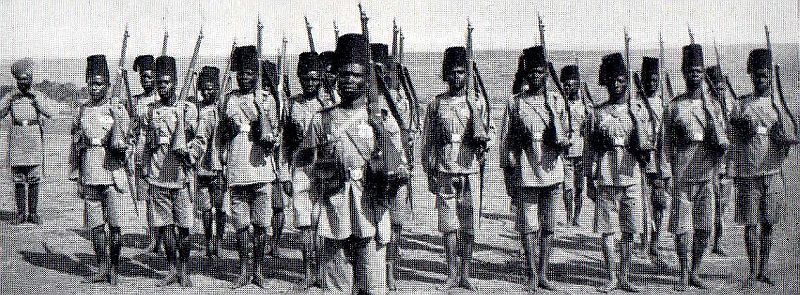 Above: 1 KAR Askari from the Atonga tribe with Sikh instructor1902 Above: 1 KAR Askari from the Atonga tribe with Sikh instructor1902 |
| King’s African Rifles and associated units mobilized for the Third ExpeditionFrom British Central Africa (later named Nyasaland and now named Malawi) came:-Local Lieutenant Colonel E.C. Margesson (South Wales Borderers) with 7 officers and 360 Askari of 1 KAR. -Captain H.E. Olivey (Suffolk Regiment) with 6 officers and 302 Askari of 2 KAR. They joined up with Local Lieutenant Colonel A.W.V. Plunkett (Manchester Regiment) who was already on the ground, having brought 5 officers, 1 warrant officer, 2 Sikhs and 308 Askari of his 2nd KAR to participate in the Second Expedition. -Captain C. Godfrey DSO (26th Bombay Infantry) and 52 Sikhs of the British Central Africa Indian Contingent(volunteers from the Indian Army who were in the employ of the British Central Africa (BCA) government). They joined the 60 BCA Sikhs who had been sent to Somaliland during the Second Expedition. British East Africa (now named Kenya) sent 2 officers and 100 Sudanese Askari from 3 KAR. Uganda sent 1 officer and 103 rifles from 5 KAR (a unit of Sikhs recruited for military service in Uganda). From Somalis Manning formed: four garrison companies of levies each 100 men strong. The two-gun 7-pounder Somali camel battery, despite its excellent service during the Second Expedition, was now manned by 21 Sikhs from the BCA Indian Contingent and was re-titled as the KAR Camel Battery. |
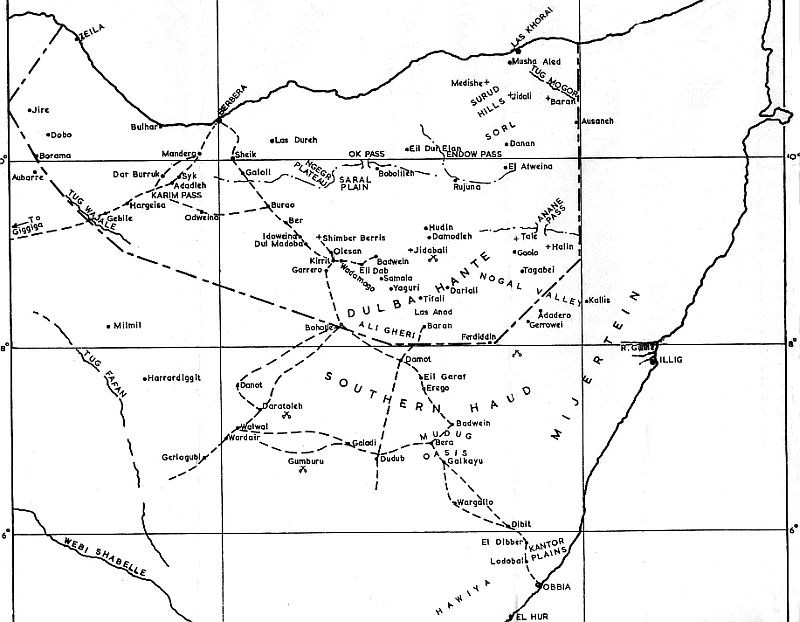 |
| Above: Somaliland Map |
Other British troops provided for the Third Expedition
Manning was convinced that KAR African Askari were the best troops to use in the Somaliland interior because of their marching abilities and easy-to-manage administrative requirements. However he also accepted other units and sub-units.
The Indian Army sent to Somaliland:
The 2nd Sikhs commanded by Lieutenant Colonel C.G.M. Fasken.
150 men of the Punjab Mounted Infantry with their mounts.
Three companies of the 1st Bombay Grenadiers from Aden.
A Supply and Transport officer and staff also from Aden.
Centre Section (two 2.5-inch jointed guns) of the Lahore Mountain Battery.
17th Company complete plus a detachment from 19th Company, Bombay Sappers and Miners.
7th Bombay Pioneers (737 men).
58, 65 and 69 Native Field Hospitals, and one Section of 15 British Field Hospital.
Also from India the 2nd Bombay Grenadiers and 400 men of the 23rd Bombay Rifles were sent to Aden as a reserve.
The Maharajah of Bikaner, an Indian Princely State, sent 200 rifles of the Bikaner Camel Corps complete with camels and commanded by Major W.G. Walker (4th Gurkha Rifles). These men were to prove both adept and reliable at scouting duties.
The British forces in South Africa sent a British Mounted Infantry Company (141 men) from the 4th Bn The King’s Royal Rifle Corps, commanded by Captain G.C. Shakerley, and a Boer Mounted Infantry Company, the Somaliland Burgher Corps (100 men) commanded by Captain W. Bonham DSO. The men brought their own horses and 50% spares for remounts. They were accompanied by a further 400 ponies and 400 mules with saddlery.
From England a Field Telegraph Section, Royal Engineers was sent which later laid a line south eastwards from Berbera to Damot.
A Royal Navy Marconi (wireless telegraphy) detachment was deployed inland but was withdrawn after disappointing results. Stores despatched to Somaliland included 2,400 water tanks, 7,300 metres of barbed wire in 91-metre legths, 500 buckets for drawing water from wells, 4,500 metres of rope, canvas watering troughs, portable pumps, canvas water bags for the troops, light axes and sets of heliograph equipment.
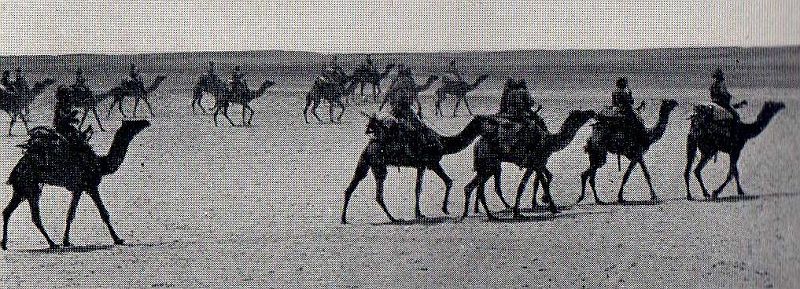 |
| Above: Bikaner Camel Corps in Somaliland. |
The British plan
The Dervishes were believed to be grouped around Mudug in Italian Somaliland. Starting from both ends and working inwards Manning planned to establish a line of posts from Berbera running southeastwards to an Italian port on the Indian Ocean coast. These posts were intended to control the wells that the Mullah’s followers and their vast herds would have to use if they moved eastwards.
The Emperor Menelik of Abyssinia agreed to deploy troops to the south of British territory to block any escape that the Mullah and his dervishes might mount, whilst the Italian government agreed to British deployments inside Italian Somaliland. Having thus contained the Dervish force the British troops would then attack and destroy it, seizing the flocks and herds which were the focal points of the dissident tribes’ existence. Unfortunately Manning did not possess Eric Swayne’s intimate knowledge of Somaliland’s inhabitants, terrain, and climatic conditions. Finally the War Office in London was to control operations.
Initial moves
The reinforcements from British Central Africa reached Berbera by the end of November 1902, as did the 150 men of the Punjab Mounted Infantry. A half company of 1st Bombay Grenadiers from Aden was sent inland to strengthen the Somali levy garrisons at Hargeisa and Burao. Plunkett’s 2 KAR was sent to Garrero to be used as a flying column against the enemy when it was time to attack. Godfrey and his 112 Sikhs from British Central Africa were divided between the garrisons at Garrero and Bohotle and the KAR Camel Battery.
After a joint British – Italian naval reconnaissance along the east coast Obbia was selected as a base port. The son of Yusuf Ali, the Sultan of Obbia, stated that up to 6,000 camels and drivers could be made available for transport duties, and 300 local mounted scouts could be recruited. On 19th December Manning received orders from London to move to Obbia with his 1, 3, and 5 KAR companies and the Punjab Mounted Infantry. The SS Haidari was hired from Aden for the voyage and besides the troops and mounts she carried ammunition, stores and rations for six months. After a four-day voyage 1 KAR began disembarking through the surf on 26th December and started to build a breakwater. All stores were landed by the 2nd January 1903. Major P.A. Kenna VC DSO, 21st Lancers, was initially appointed to command the combatants at Obbia; later he commanded the mounted troops. Local Lieutenant Colonel G.T. Forestier Walker, Royal Field Artillery, was Manning’s Chief Staff Officer.
The infantry, mountain gunners, Sappers and Miners and the Bikaner Camel Corps that were coming from India sailed directly to Obbia, as did the mounted infantry from South Africa. When all the men had disembarked Manning had a column numbering 2,296 combatant troops encamped a kilometer inland from Obbia, and over 2,000 more men based there permanently on logistical duties.
Now local difficulties emerged as Sultan Yusuf Ali and his son obviously did not rate the British chances of success too highly, and they began to obstruct British interests. Manning needed 3,500 camels but by mid-January only four had been obtained, the Sultan having instructed his subjects to only deal with the British through himself. By the end of January the British had 150 camels, but it was obvious that firm action was needed and so an Italian warship deported Yusuf Ali and his son through Aden to Eritrea. This action resulted in more purchasing opportunities for Manning’s transport officers but even so the local Somalis were not keen to co-operate and many camel drivers deserted soon after being hired. 1,000 camels were shipped around the coast from Berbera, but they had to be retained aboard until a heavy monsoon swell subsided at Obbia, and this event later resulted in a high mortality rate amongst the animals.
Captain and Local Lieutenant Colonel A.S. Cobbe DSO (32nd Sikh Pioneers) arrived to take over command of the three 1 KAR companies from Margesson who reverted from his local rank and remained with the unit. Manning ordered Cobbe to take a strong column inland to reconnoitre the route towards Galkayu. Cobbe did this, cleaning out wells along the route. The column advanced in square at all times and was not allowed to pile arms. Cobbe returned to Obbia on 21st February with 400 camels that he had obtained from the Hawiyya tribe around El Hur. The following day Manning paraded the Obbia Force to witness the presentation of a Victoria Cross to Cobbe, awarded for conspicuous bravery displayed at the fighting at Erigo in the Second Campaign. The medal had been sent with an accompanying letter from Field Marshall Lord Roberts.
After the parade Manning took a flying column of his most mobile troops out and seized the wells at Galkayu without a fight, building a strong zareba (fortification of thorn trees) there. A second slower column commanded by Lieutenant Colonel Fasken joined Manning on 24th March. Cobbe was then sent out to link up with Plunkett who was now at Damot. Manning now had in place his continuous line of posts stretching from Berbera to Obbia. Manning appears to have disliked the mule transport of the Lahore Mountain Battery, preferring to send the KAR Camel Battery out with mobile columns.
Searching for the route to Wardair
Manning now concentrated his force by ordering Plunkett to join him from Damot with ‘A’, ‘C’ and ‘F’ Companies of 2 KAR, 50 Somali Mounted Infantry of 6 KAR, the KAR Camel Battery and a thousand transport animals. Plunkett’s men and animals made a hard march of 170 kilometres over waterless terrain in four days. A typical rifleman’s load was: rifle and bayonet, 100 rounds of ammunition, canvas water bag, water bottle, one day’s ordinary rations, one day’s emergency rations, axe or digging tool, cape or blanket, and personal items, all in a haversack and pouches.
News arrived of the Dervish herds being seen between Dudub and Galadi and so Manning marched to Galadi, arriving there on 31st March. Water, the biggest logistical problem for the British troops, was found in quantity at Galadi.
Both Cobbe and Plunkett now took out columns and successfully raided Dervish herds around Gumburu. Believing that the Mullah’s main force was at Walwal and Wardair Manning hoped to strike a decisive blow, and he ordered Cobbe and Plunkett to make a strong reconnaissance towards those two wells from Galadi. Cobbe was in charge of this detachment which finally totalled:
5 officers and 116 Askari of 1 KAR.
10 officers, 1 warrant officer and 253 Askari of 2 KAR.
1 officer and 10 mounted infantry of 6 KAR.
1 officer and 50 sepoys of 5 KAR.
2 officers and 21 British mounted infantry.
1 officer and 22 Burgher mounted infantry.
2 guns of the KAR Camel Battery.
4 Maxim guns and 380 transport camels.
Cobbe’s main problem was a navigational one in the thick bush as local guides proved to be unreliable. Contact was made with enemy horsemen on 14th April and the firing stampeded some of the British transport animals. Luckily a heavy thunder-storm broke during the next day which allowed the animals to water from pools near Gumburu, but Dervish horsemen were seen hovering around the flanks of the British troops.
On the morning of 16th April Cobbe sent out two patrols, each a half-company strong, to the west and south-west to search for water. The patrol commanders were Captains H.H. de B. Morris (East Kent Regiment) and C.E. Luard (Norfolk Regiment). A mounted infantry patrol went north to search for the route to Wardair. Morris was soon in contact with Dervishes to his front and Luard’s patrol was also heard firing. Another half-company and a mounted infantry detachment under Captain Shakerley marched to support Luard.
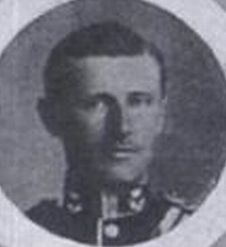 In the fighting that followed Lieutenant C.E.Chichester (Right) 6 KAR (Somersetshire Light Infantry) was killed and Burgher Hill and two Somali mounted infantrymen of 6 KAR were wounded. Rifleman No. 2556 Joseph Miller, King’s Royal Rifle Corps, was later awarded a Distinguished Conduct Medal after Captain Shakerley had reported:
In the fighting that followed Lieutenant C.E.Chichester (Right) 6 KAR (Somersetshire Light Infantry) was killed and Burgher Hill and two Somali mounted infantrymen of 6 KAR were wounded. Rifleman No. 2556 Joseph Miller, King’s Royal Rifle Corps, was later awarded a Distinguished Conduct Medal after Captain Shakerley had reported:
On 16th April 1903 I was in command of the mounted patrol sent out from the column. We came in contact with some mounted dervishes, and were eventually surrounded by several hundreds.
Rifleman J. Miller was standing close to me, and heard me say I was going to send a message to Officer Commanding Column; he immediately volunteered to carry the message. He succeeded in getting through the enemy’s lines at great risk, and delivered the letter to Officer Commanding Column.
The British patrols withdrew back to Cobbe’s position at Gumburu, and a message was sent to Manning requesting him to march to Gumburu where a battle appeared imminent. That afternoon Captain H.C. Vesey and 48 sepoys of 2nd Sikhs reached Cobbe having escorted a water convoy.
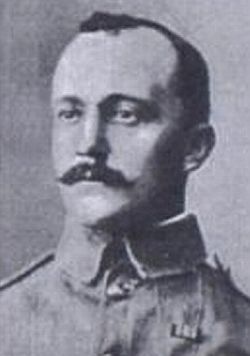 The battle of Gumburu
The battle of Gumburu
The next morning, 17th April, Cobbe sent out two more reconnaissance patrols whilst he waited for Manning to arrive. Captain H.A. Walker (Royal Fusiliers) took a half-company of 1 KAR to a hill 2.5 kilometres to the south-west. Captain H.E. Olivey (Left) took ‘C’ Company 2 KAR five kilometers to the west. Olivey left before dawn and made good progress but had no contacts and started to withdraw. At 0805 hours he sent a message back to Cobbe stating that enemy foot and horsemen were now advancing upon ‘C’ Company and that reinforcements were needed.
Cobbe ordered Plunkett out in support with ‘A’ Company 2 KAR, 5 men from 1 KAR, the water convoy escort of 48 sepoys from 2nd Sikhs and two Maxim guns. Captain Vesey had requested that his 2nd Sikhs party be included. The Maxims were loaded and an extra 50 rounds per rifleman were issued to the KAR Askari only, the Sikhs carried the standard issue of 100 rounds. Plunkett departed at 0915 hours. Two British mounted infantrymen from the 4th Battalion KRRC accompanied Plunkett, as did a Medical Officer from the Indian Medical Service and a Hospital Assistant from 5 KAR. Just before he left Plunkett saw another message from Olivey to Cobbe stating that he was 2.5 kilometres out and not in contact. Cobbe’s orders to Plunkett were to recover ‘C’ Company and bring it back. Neither Plunkett nor any of the officers with him were ever seen again.
Cobbe then recalled Walker’s patrol and strengthened his zareba. Firing was then faintly heard from a distance, and Somali scouts went out to reconnoitre. A scout returned with Plunkett’s guide, who was wounded, across his saddle. The guide reported that Plunkett’s force had been cut up. Cobbe did not have sufficient men with him to leave the zareba, so he entrenched and strengthened it. Wounded Askari from 2 KAR then trickled in, assisted by the mounted infantry.
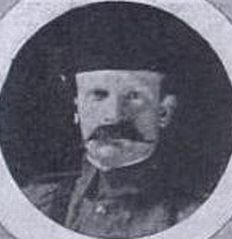 It emerged that Plunkett (Left), a tough, brave and experienced but perhaps impetuous soldier, had disobeyed Cobbe’s orders. On reaching Olivey he formed a square with the 2nd Sikhs in the front face and advanced over 6 kilometres through the bush. On reaching an open space partly surrounded by thick bush he halted, perhaps hoping to teach the Dervishes a lesson. After about 5 minutes he was attacked from the bush by the leading elements of up to 8,000 spearmen and horsemen led by the Mullah. At first horsemen assaulted the front and flanks of the square. After repulsing the first attack Plunkett ordered the square to advance into the centre of the open space. This advance left wounded Askari behind on the ground, but this saved the lives of some of them who managed to escape later as the fighting moved away from them. Then spearmen arrived and attacked all sides of the square. The Dervishes cried “Allah! Allah!” whilst their womenfolk ululated shrilly in the background.Horsemen fired from their saddles into the British troops who returned volley fire into the seething mass of attackers. However the solid rifle bullets of the Sikhs were not knocking down the most fanatical of the Dervishes, who kept charging forward although wounded. At one stage spearmen broke through the face of the square but the Sikhs reformed and killed or drove back the attackers. The British officers were targeted and brought down first. Plunkett was wounded early in the action by a spear thrust but stayed on his feet. The two machine guns, each in a corner of the square, cut swathes through the Dervishes but began to run out of ammunition. As men dropped ranks had to be tightened as there were no supporting troops, but even so Dervishes repeatedly broke into the square before being shot or bayoneted. Cobbe’s orders had been that this was a short recovery patrol and reserve ammunition had not been taken. Eventually when the ammunition was expended a horde of spearmen broke into the square. Prominent amongst these attackers were the ferocious men of the Adonis tribe. Plunkett and Johnston-Stewart ordered those sepoys and Askari still standing to bayonet-charge their way back to Cobbe’s position. A Dervish then shot Plunkett through the head. It emerged that Plunkett (Left), a tough, brave and experienced but perhaps impetuous soldier, had disobeyed Cobbe’s orders. On reaching Olivey he formed a square with the 2nd Sikhs in the front face and advanced over 6 kilometres through the bush. On reaching an open space partly surrounded by thick bush he halted, perhaps hoping to teach the Dervishes a lesson. After about 5 minutes he was attacked from the bush by the leading elements of up to 8,000 spearmen and horsemen led by the Mullah. At first horsemen assaulted the front and flanks of the square. After repulsing the first attack Plunkett ordered the square to advance into the centre of the open space. This advance left wounded Askari behind on the ground, but this saved the lives of some of them who managed to escape later as the fighting moved away from them. Then spearmen arrived and attacked all sides of the square. The Dervishes cried “Allah! Allah!” whilst their womenfolk ululated shrilly in the background.Horsemen fired from their saddles into the British troops who returned volley fire into the seething mass of attackers. However the solid rifle bullets of the Sikhs were not knocking down the most fanatical of the Dervishes, who kept charging forward although wounded. At one stage spearmen broke through the face of the square but the Sikhs reformed and killed or drove back the attackers. The British officers were targeted and brought down first. Plunkett was wounded early in the action by a spear thrust but stayed on his feet. The two machine guns, each in a corner of the square, cut swathes through the Dervishes but began to run out of ammunition. As men dropped ranks had to be tightened as there were no supporting troops, but even so Dervishes repeatedly broke into the square before being shot or bayoneted. Cobbe’s orders had been that this was a short recovery patrol and reserve ammunition had not been taken. Eventually when the ammunition was expended a horde of spearmen broke into the square. Prominent amongst these attackers were the ferocious men of the Adonis tribe. Plunkett and Johnston-Stewart ordered those sepoys and Askari still standing to bayonet-charge their way back to Cobbe’s position. A Dervish then shot Plunkett through the head. |
As the remains of the square disintegrated the attackers swarmed over the retreating British soldiers, spearing and hacking them to death. No British or Indians survived, only 47 Yao and Atonga Askari from British Central Africa made it back to Cobbe’s zareba, and 42 of these men were wounded. No. A 759 Private Mandelumba, 2 KAR, was later awarded a Distinguished Conduct Medal with the citation:
This man carried into the zareba, a distance of 6 miles from the action at Gumburu on 17th April, 1903, No. 885 Private Gomani, of the same battalion, who was wounded in the arm.
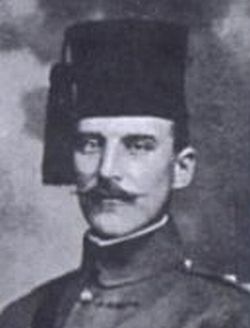 British personnel killed at Gumburu were:
British personnel killed at Gumburu were:
From 2 KAR: Major and Local Lieutenant Colonel Arthur William Valentine Plunkett (Manchester Regiment), Captain James Johnstone-Stewart (Left)(Argyle and Sutherland Highlanders), Captain Herbert Edward Olivey (Suffolk Regiment), Captain Herbert Humphrey de Bohun Morris (Page bottom Left)(East Kent Regiment), Captain Lachlan M’Kinnon (Nottinghamshire and Derbyshire Regiment), Lieutenant Joseph Aloysius Gaynor (2nd Dragoon Guards), Lieutenant Ernest William Bell (Page Botton Right) (Suffolk Regiment).
From 2nd Sikhs: Captain Herbert Charles Vesey.
From the Indian Medical Service: Lieutenant Francis Wheler Sime.
From the KRRC: Riflemen No. 2176 Laurence Ensor and No. 1589 John Barrow.
Indian personnel killed were: Havildar Major Dewan Singh, 2 KAR and 36th Sikhs; No. 153 Lance-Havildar Khajan Singh, 1 KAR and 3rd Peshawar Battery; 2 un-named officers and 46 sepoys from 2nd Sikhs; one Hospital Assistant from 5 KAR.
The African dead were 117 Askari from 2 KAR; 2 Askari and one Maxim Gun Carrier from 1 KAR; 13 Somali transport drivers and followers.
Dervish losses were never known but mounds of dead lay around the site of the square. One estimate given by Dervish prisoners later was that around 1,000 men were killed and many more were badly wounded.
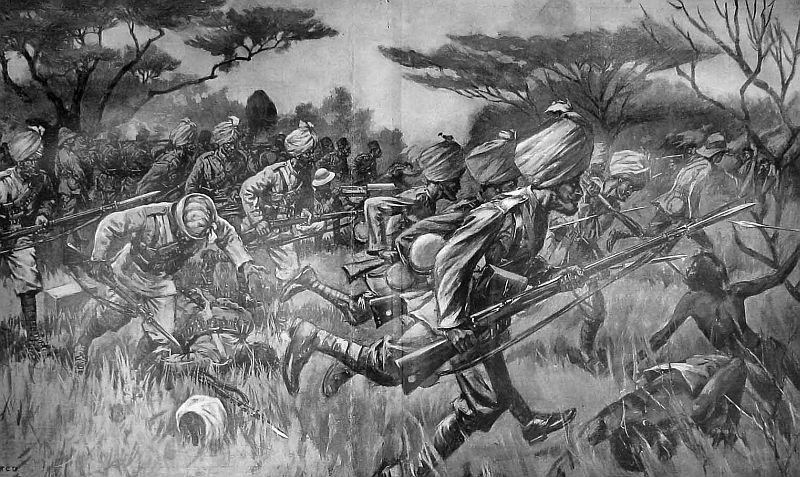 |
| Above: Major Gough, Sergeant Gibb and the Sikhs at Daratoleh. |
Gough’s move to Danot
Manning now ordered Cobbe to withdraw to Galadi. But also out in the field was Brevet Major J.E. Gough (Rifle Brigade and 2 KAR) who Manning had ordered to march with a mobile column from Bohotle 120 kilometres south-westwards to Danot. Gough’s mission was to collect information and Dervish stock, and to act as a block in case the Mullah’s men moved in his direction.
On 17th April Gough halted 24 kilometres short of Danot as his mounts were “done up”. A 6 KAR patrol of mounted infantrymen reconnoitred Danot water hole, chased away 15 Dervishes and captured 9 ponies. On his return the patrol commander reported that there was only sufficient water at Danot for Gough’s column for three days. Gough then sent back his infantry, 2 KAR and the BCA Sikhs, to Bohotle. Gough then led his mounted troops to occupy Danot waterhole. At this stage he had with him 56 men of the Bikaner Camel Corps and 57 mounted infantry and 51 camelry of 6 KAR.
At Danot Gough found sufficient water and so sent a message to the infantry ordering that now 100 Askari of 2 KAR, 50 Sikhs of the BCA contingent, 2 maxims, reserve ammunition, 100 water tins and all available rations be turned around and sent to Danot. A strong Zareba was built at Danot to cover the waterhole, which despite its thick covering of green slime stayed full after the men and animals had watered.
On 18th April Gough sent patrols out of Danot. A 6 KAR mounted infantry patrol had a contact resulting in the killing of 18 Dervish spearmen and the capture of two prisoners and 300 camels. The prisoners were wearing pieces of British equipment and they talked of a recent large battle at Gumburu, but Gough believed that the equipment came from a battle during the Second Expedition at Erigo. One of the prisoners later died of wounds and the other was shot through the head whilst trying to escape from the zareba.
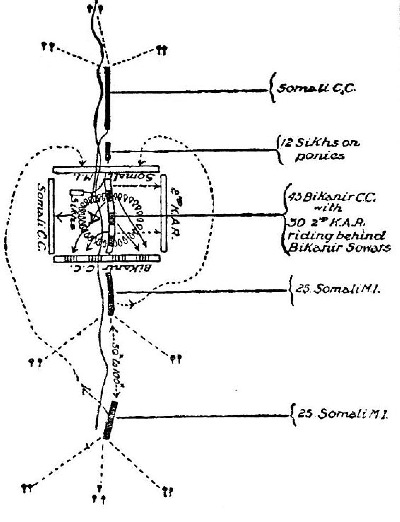 The fight at Daratoleh
The fight at Daratoleh
At 0430 hours on 22nd April Gough moved out of the zareba to look for the enemy. He took:
· 2 officers and 30 Askari from 2 KAR.
· 4 officers and 104 camelry and mounted infantry from 6 KAR.
· 1 officer and 12 BCA Sikhs mounted on ponies.
· 2 officers and 45 rifles of the Bikaner Camel Corps. As the Indian camel saddles were double ones the 2 KAR Askari rode behind the sowars of the Bikaner Camel Corps.
Each man carried 250 rounds of ammunition.The remainder of the column remained to hold the zareba at Danot under Captain F.B. Young (Cheshire Regiment and 2 KAR).
The order of march was 6 KAR camelry riding at the point followed by the mounted BCA Sikhs; then came a loose square as shown in the first sketch; followed by two groups of 6 KAR mounted infantrymen as rearguard. By 0730 hours the advance guard was skirmishing. At 1020 hours a large enemy force was encountered to the front. Gough at once dismounted his troops in flat open ground surrounded by clumps of tall bush and long grass, and formed a square as shown in the second sketch. Camels and ponies were roped down in the centre.
The British waited and tension rose. Suddenly an outburst of enemy rifle fire from the thorn bushes and grass opened the battle. An estimated 300 Dervish riflemen and 500 spearmen moved against the square. The British maintained fire discipline using volley fire against enemy rushes. The one Maxim gun was handled by Armourer-Sergeant Allan Gibb, Army Ordnance Corps and attached to 2 KAR. He had already been cited for coolness and bravery in battle during the Second Expedition. Gibb and his gun team regularly moved the Maxim and ammunition to whichever face of the square needed support, cutting down groups of attackers. The effective volley-fire of the riflemen kept the enemy at a distance of 20 metres from the square and bayonets did not have to be used. However after four hours of fighting several officers and men were down and ammunition was running low. Captain Godfrey was one of the dead. Gough issued a warning order for a fighting withdrawal.
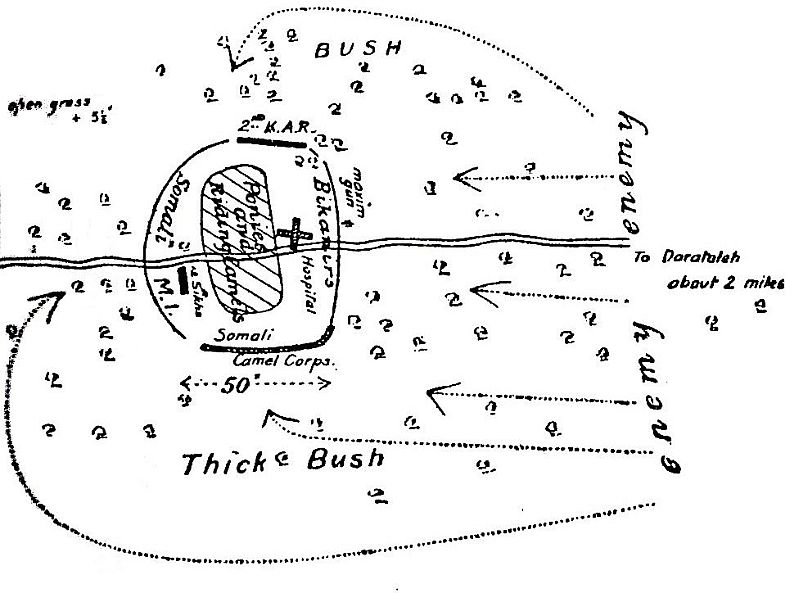 |
| Above: Daratoleh battle square |
The withdrawal from Daratoleh
The British wounded and dead were secured onto camels, except for three 6 KAR corpses that were left because their Somali colleagues saw no need to move them. To clear the ground Gough ordered the front and left faces to bayonet charge 100 metres forward. This was achieved successfully by the 2 KAR and Bikaner Camel Corps detachments under Captains R.E.L. Townsend and Walker. The war correspondent of the illustrated weekly Graphic newspaper joined in the Bikaner’s charge, replacing the wounded Captain Hughes. The returning troops brought in 9 rifles, 3 of which were identified as 2 KAR weapons from Cobbe’s column.
The withdrawal now began, the rear face withdrawing first, followed by the camels and ponies, and then the other three faces pulled back to join the rear face. This slow but sure method of using an ‘elastic square’ continued through the heat of the afternoon. As the withdrawal progressed the 6 KAR camelry troops, the BCA Sikhs and and 2 KAR Askari again made successful bayonet charges to push the enemy back. By 1500 hours enemy pressure was increasing as more Dervishes arrived to attack the withdrawal. Gough sent four 6 KAR horsemen back to Danot with an order for ammunition to be sent forward.
The ammunition detail and escort arrived at 1730 hours under the command of Captain P.C.R. Barclay (Indian Staff Corps and 1 KAR), allowing the mens’ pouches to be re-filled with rounds. Gough now ordered the 6 KAR mounted infantry to mount and clear the bush adjacent to the front and side faces, which they did successfully under Captains Dickinson and Howard. Whilst doing this some of the 6 KAR soldiers observed Dervishes wearing the black fez of 2 KAR which could only have obtained during action against Cobbe’s column. The ‘elastic square’ now resumed its progress back to Danot, arriving there at 0115 hours.
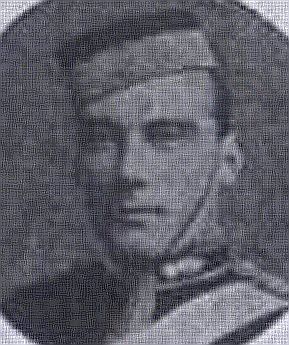 A display of great gallantry
A display of great gallantry
During the initial stages of the withdrawal Gough’s staff officer, Captain C.M Bruce (left) (Royal Field Artillery), was shot from 20 metres range whilst with the rearguard. He fell and was unable to move. The enemy followed up closely hoping to seize Bruce’s body and disfigure it.
The rearguard withdrew as ordered but Captain Walker and the column Intelligence Officer Captain G.M. Rolland (1st Bombay Grenadiers), two KAR Askari, one 6 KAR camel man and one BCA Sikh stood fast around Bruce, and held the attackers off. Rolland ran back to the disappearing square and returned with Gough, a camel and supporting troops.
The men around Bruce had to fight fiercely, the Sikh was wounded and Bruce also was wounded again. Bruce, now dying, was loaded onto the camel and the party fought its way back into the square.
Later the following awards were made.
The Victoria Cross (two recipients initially, followed later by a third):
Captain George Murray Rolland.
Whilst retiring from Daratoleh, Somaliland, he (together with Captain Walker and 4 men) was in the rearguard under heavy fire from the pursuing enemy when Captain Bruce was shot through the body. He ran 500 yards to fetch help whilst the other men fired ceaselessly to keep the enemy in check. Returning with Major Gough, he helped to lift Captain Bruce onto a camel. The enemy remained in close pusuit for a further three hours, during which time Captain Bruce died.
Captain William George Walker.
Whilst retiring from Daratoleh, Somaliland, he (together with Captain Rolland and four men) was in the rearguard under heavy fire from the pusuing enemy when Captain Bruce was shot through the body. Whilst Rolland ran to fetch help, he kept up a desperate fire to keep the enemy at bay. When Rolland returned with Major Gough, he helped to lift Captain Bruce onto a camel. The captain died soon afterwards.
Brevet Major John Edmund Gough
During the action at Daratoleh, on 22nd April last, Major Gough assisted Captains Walker and Rolland in carrying back the late Captain Bruce (who had been mortally wounded) and prevented that officer from falling into the hands of the enemy. Captains Walker and Rolland have already been awarded the Victoria Cross for their gallantry on this occasion, but Major Gough (who was in command of the column) made no mention of his own conduct, which has only recently been brought to notice.
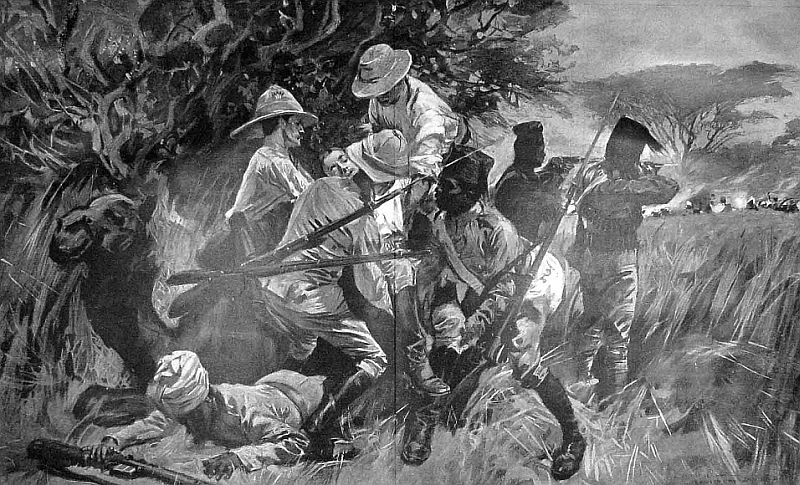 |
| Above: Rescue of Captain Bruce |
Distinguished Conduct Medal
66 Sergeant Ndermani, 2 KAR.
87 Corporal Surmoni, 2 KAR.
Sowar Umar Ismail, 6 KAR Camel Corps.
Indian Order of Merit
BCA No. 126/Regimental No. 2376 Lance-Naik Maieya Singh, 24th Baluchistan Regiment.
Back at Danot Gough’s column re-grouped. The British and Askari dead were buried and the Sikh dead were cremated. The casualty list was 15 men killed and 29 wounded. Animal casualties were 19 riding camels killed and 13 wounded, and 9 ponies killed and 9 wounded. Gough estimated that 150 Dervishes were killed and many more must have been wounded.
The British dead were Captains Charles Godfrey DSO and Charles Maurice Dundas Bruce. The wounded were the officer commanding 6 KAR Major A.G. Sharp (Leinster Regiment), Major H.B. Rowlands (Suffolk Regiment and 2 KAR), Captain E.M. Hughes (14th Lancers and the Bikaner Camel Corps), and Captain R.E.L. Townsend (Worcestershire Regiment and 2 KAR). Major Rowlands subsequently died of his wounds at Bohotle.
Gough wrote in his after-action report:
I cannot speak too highly of the behaviour of all ranks. It could not have been better, the Somalis (6 KAR) surprising everyone by their steadiness and dash, 2 KAR having both officers wounded and losing 11 men killed and wounded out of 30, and yet full of dash and fight.
The Abyssinian sector
As the news of the Gumburu disaster spread London ordered Manning to concentrate his mobile columns at defended locations, and to maintain readiness for future operations. Gough arrived at Bohotle on 28th April. Manning correctly believed that the Dervish flocks were still in the Walwal – Wardair area and he sent a message to the Abyssinians urging them to attack Wardair. However the Abyssinian force was composed of tribal groups under their own chiefs and was not organised as an army. The force reached Mekunna on the Webi Shebelli river, 275 kilometres south-south-west of Gumburu, on 17th April but stayed near the river as it had no water-carrying equipment for a desert crossing.
In the event it was late May before Manning’s message reached his chief liaison officer with the Abyssinians, Colonel A.N. Rochfort CB (Royal Artillery). Despite not being self-sufficient in necessary equipment the Abyssinians did successfully fight engagements against Dervish forces. Rochfort recorded one battle where;
. . . we were attacked by 1,100 tribesmen on three sides. . . .The attack came as a surprise and severe hand-to-hand fighting ensued, lasting 45 minutes, when the tribesmen were beaten off and many killed in the water while trying to cross the river. . . .What direction there was during the action was carried out by the various chiefs. There was a great deal of firing and considerable noise and confusion, but individually the men rushed into the fight in the keenest possible way. . . .They are too excitable to be good shots and prefer their swords to their rifles. . . .It was altogether a very remarkable sight. The Abyssinians pursued all day. The casualties are reported as follows:-
Abyssinians: killed 21; wounded 10.
Dervishes: killed 301; wounded 2.
I think the Dervish loss is much exaggerated.
Doctor Martin is doing all that is possible for the wounded.
(The other British liaison officers with Rochester were Captain and Local Major R.P. Cobbold, Reserve of Officers, and Dr. C. Martin of the Burmah Uncovenanted Medical Service.)
During late May an Abyssinian detachment killed around 1,000 Dervish spearmen near Jeyd. Whilst Manning had hoped for more from his allies the Abyssinians had acted as an effective block to any large-scale Dervish movement to the south.
The Mullah’s escape
Manning still believed that he held the upper hand because he was holding and controlling all the water holes to the east of Wardair where the Mullah’s followers’ flocks and herds were concentrated. He believed that once he could find the Dervish herds moving then he could force a fight on his terms. The Mullah’s men would either have to fight or submit to the British to protect their animals and their nomadic existence.
But the Dervishes knew the ground and the climatic conditions better than Manning did and he was out-manouevred. The rains that fell in May and June created pools and water holes that the British could not control. The Mullah moved his tribes eastwards towards the Nogal valley. On 14th June a 6 KAR mounted reconnaissance patrol found the Dervishes crossing Manning’s defended line 24 kilometres from Damot. The Mullah’s men were picqueting all the recently-formed pools and water holes that he needed and 5,000 Dervish horsemen were covering the movement of the herds.
The officer commanding the Berbera – Bohotle Lines of Communication, Lieutenant Colonel J.C. Swann (Indian Army), had 1,132 all ranks and 8 Maxim guns at Bohotle and he considered that force insufficient to both hold Bohotle and immediately confront the Dervishes. By the time Manning had moved more men to Bohotle on 26th June there were only meagre pickings from the tail-end of the Dervish migration in the area. British patrols seized 400 camels and 2,000 sheep and goats. The Mullah and his followers had moved into the Nogal region. London was not impressed and the Third Expedition was terminated.
Conclusion
The planning and preparation performed by the British staff officers, the building of roads by Indian Sappers and Pioneers, the operation of a port in extremely difficult conditions at Obbia, the construction of a long telegraph line by Royal Engineers and the holding of a long series of defended posts had all been in vain. Manning had not concentrated sufficient force in the actions that were fought and the Dervish army, whilst doubtless hurt, was not destroyed. The amount of stock taken was much less than in the Second Expedition when Swayne’s Somali troops excelled at bringing herds in, knowing that they were going to share in the plunder.
Manning’s lack of confidence in the Somalis as fighters was unfortunate, as Gough’s comments after Daratoleh showed. London now planned a much larger Fourth Expedition, this time to be commanded by a General who believed that the use of a greater number of Indian Army troops was the answer to Somaliland’s military challenges.
A campaign bar to the African General Service medal was not issued until after the conclusion of the Fourth Campaign.
Captain and Brevet Major J.E. Gough VC, the Rifle Brigade (the Prince Consort’s Own) was appointed to the Brevet rank of Lieutenant Colonel.
Armourer-Sergeant Allan Gibb, Army Ordnance Corps and attached to 2 KAR, later received a Distinguished Conduct Medal for his actions during the Second Expedition.
_________________________________________________________
References:
Frontier and Overseas Expeditions from India Volume VI, Expeditions Overseas, reprinted by The Naval & Military Press Ltd.
The Official History Of The Operations In Somaliland 1901-04, reprinted by The Naval & Military Press Ltd.
Hamilton, Angus, Somaliland, 1911, Hutchinson and Co., London.
Hayward, Birch and Bishop, British Battles and Medals, 2006, Spink, London.
Headlam, Major General Sir John, The History of the Royal Artillery from the Indian Mutiny to the Great War, 1937, Royal Artillery Institution.
Jardine, Douglas, The Mad Mullah of Somaliland, 1923, Herbert Jenkins Ltd., London.
Magor, R. B., African General Service Medals, The Naval and Military Press, revision of 1993 edition.
Moyse-Bartlett, Lt. Col. H., The King’s African Rifles, reprinted by The Naval & Military Press Ltd.
Page, Malcolm, KAR – A history of the King’s African Rifles, 1998, Leo Cooper, London.
The London Gazette
The Graphic..
The VC & DSO Book Volume II, The Naval
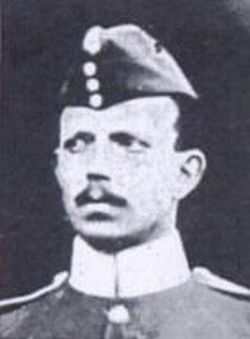 |
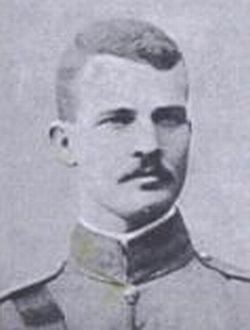 |






























Also in your references should be Stephen Lewis’s memorial website, where the photographs accompanying the article have been copied from.
http://glosters.tripod.com/memindex3.htm
I am the great grandson of Captain Olivey.